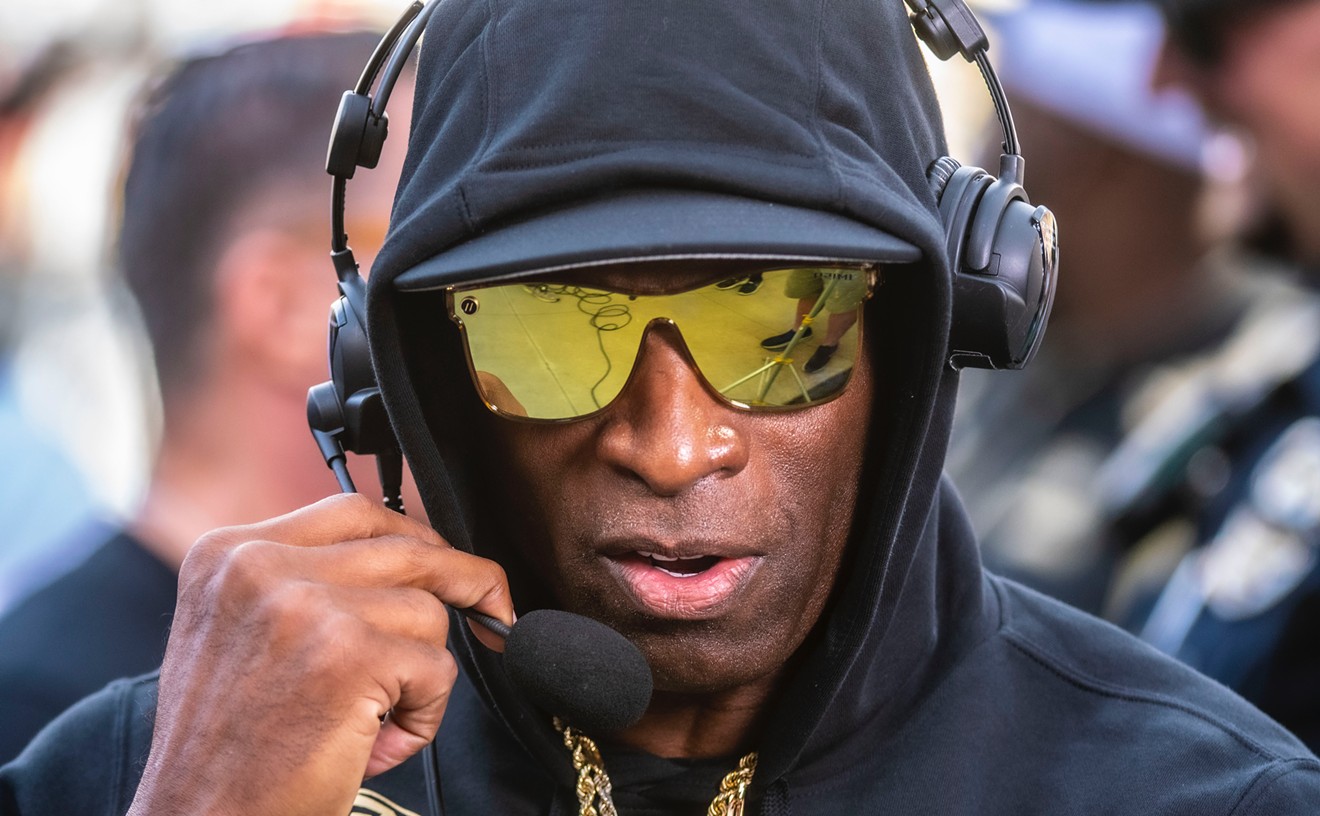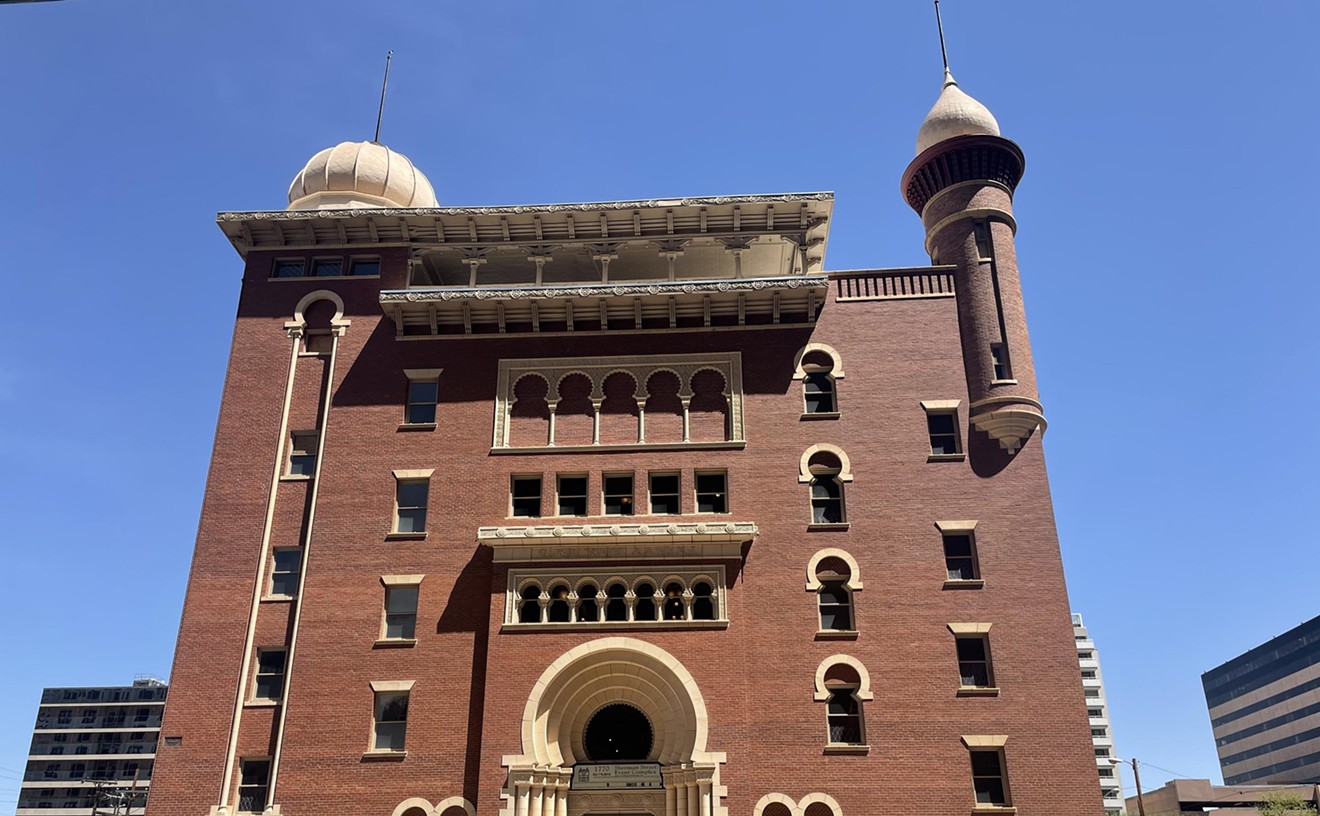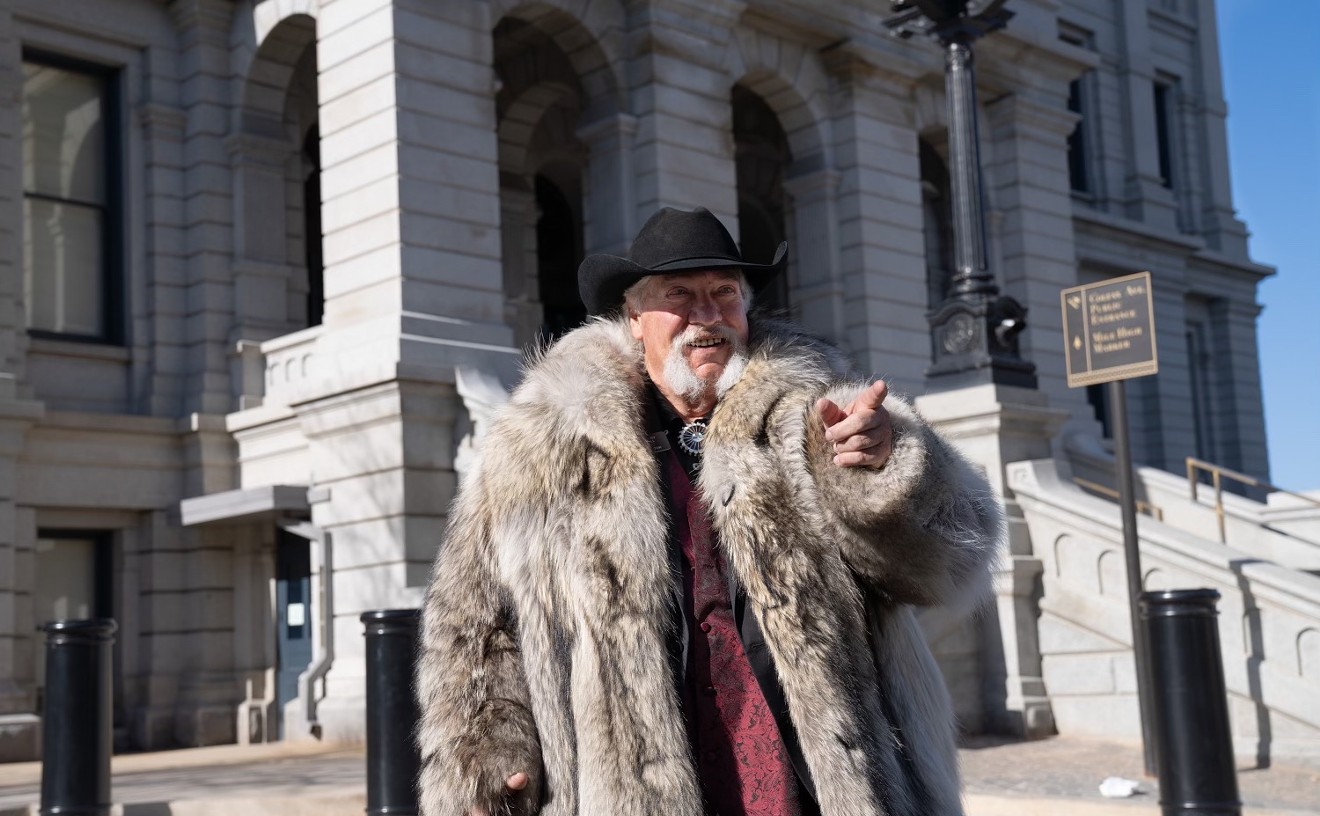The Colorado chapter of the American Indian Movement helped raise Moho'ma'na, a Hopi and Dineh activist now in her late twenties. Growing up, she marched to abolish Columbus Day. She witnessed police arrest her elders as year after year they tried to shut down the annual Knights of Columbus parade that they argued honored an Indian-killing colonizer. She saw her Dineh family clash with Peabody Energy in order to protect rural Black Mesa from mining. She watched her community try to prevent Denver’s Newmont Mining from ravaging indigenous lands for gold.
The attempts to abolish Columbus Day in Denver date back to 1989, seventy years after Colorado became the first state to make it a holiday. Over the years, the constant conflict took a toll on Moho'ma'na's community. Accusations that AIM members were FBI infiltrators spread, and the Colorado chapter split from national AIM for a time. Tensions boiled between longtime organizers. Protracted court battles over civil disobedience sucked up time, money and energy.
The last mass arrests at a Colorado Transform Columbus Day protest took place in 2007. The most recent attempt to confront the Columbus Day parade happened in 2011.
After that, Moho'ma'na was one of many who took a long pause from activism. But that break has ended.
The struggle hundreds of miles away over a North Dakota oil pipeline has inspired Moho'ma'na and other women, as well as Two Spirit and queer indigenous activists, to renew their activities on behalf of Native American causes and to take over leadership from their male elders, some of whom are eager to see members of a new generation dedicate themselves to the cause.
"Those of us who have been around for a while, we’re more than willing to take a slower pace and to let other people lead," says veteran Colorado AIM organizer Glenn Morris. "That’s long overdue. We welcome that. It’s always inspiring and encouraging to see that fire in younger people to keep the struggle that their ancestors fought so that they could be here to keep that alive."
On Labor Day weekend, Moho'ma'na, empowered by elders who pledged they would support her, found herself driving donated supplies from Denver to North Dakota with her ten-year-old brother, her partner and friends to join thousands of Native activists trying to stop Energy Transfer Partners from building the Dakota Access Pipeline.
After more than ten hours on the road, they arrived on contested federal land that the Sioux say was stolen from them when the government broke a treaty signed in the 1800s. Dozens of flags on tall wooden poles lined the drive to the Standing Rock encampment, each representing a different Native tribe.
Moho'ma'na set up her tent at the Red Warrior Camp, which is on the front lines of the fight. The camp is always ready to resist. “Red Warrior Camp has taken a strong position of defending sacred land and water by any means necessary,” Moho'ma'na says.
The night Moho'ma'na arrived, drums pounded, sage burned, and elders held ceremonies and delivered speeches late into the night. Moho'ma'na fell asleep to the sounds of her people’s resistance. She awoke to Democracy Now! journalist Amy Goodman wandering through the Red Warrior Camp, trying to tell about the thousands of indigenous activists and allies working to stop the pipeline construction.
Moho'ma'na was engulfed by the spiritual weight of the camp, she remembers; she felt at peace with indigenous people from New Zealand, Africa and the Americas who all showed up to protect Sioux land. She had never seen so many Native people struggling together in one place.
She dropped off the donations she had brought from Colorado. She wandered around trying to make herself useful. Then, early that afternoon, trucks rolled up. Their drivers were panicked. “Warriors. We need warriors,” they said.
The construction company had surprised the activists, who had been told there would be no construction on Labor Day.
Moho'ma'na, her brother and friends found themselves on a truck headed to the construction site. When they arrived, they joined hundreds of others who had lined up against a fence separating them from diggers and bulldozers tearing at the earth. Security guards lined the fence, clutching growling dogs.
Moho'ma'na had seen police use German shepherds at protests in Denver. But those dogs had always been trained. “Two dogs were going so crazy they started to fight each other. Their handlers couldn’t control them,” Moho'ma'na says. The guards threw one dog in a truck, and a man drove it through the crowd, nearly running over protesters.
The attack dogs did not stop the activists from approaching the security perimeter. “We got all kinds of crazy dogs on the res,” Moho'ma'na says. “It’s going to take a little more than some mean-looking dogs to scare off our people, who have survived atrocities that are unimaginable to most people.”
The first person Moho'ma'na watched cross the security line was a mother holding a child. A security guard tried to push her back. Other women crossed the line. Security moved toward them.
“One of the employees threw down somebody that had walked up to them…. They were the first to use physical violence,” Moho'ma'na says. “After that happened, the fence just fell. From one side, it fell like a wave. Everybody just pushed it down.”
Violence erupted. The workers and security tried to ward off the crowd. They unleashed dogs on the protesters. Still, the crowd did not stop fighting until they had pushed the workers back and construction had been stopped.
A few days later, Moho'ma'na and her family returned to Denver. They joined hundreds in a Four Directions march the next week that converged on the Colorado State Capitol. There, activists who had traveled to Standing Rock told their stories of the camps and tied the Sioux struggle to local fights against fracking, mining and Columbus Day. Another message came through loud and clear: Indigenous activism has returned in Denver, and young women have taken the lead.
The Denver activists are building bonds with the people still at Standing Rock, who plan to continue resisting the oil-pipeline construction and camp out in the cold North Dakota winter. Here at home, Moho'ma'na and three colleagues are now organizing a Four Directions March against the annual Columbus Day Parade, which is slated for Saturday, October 8.
"These four women have been catalysts, and they’re also leaders in their own right, but they’re also supported by dozens of other people," Morris says. "This is not merely sloganeering. This is not just about bumpersticker politics. This is deep analysis and visioning for the future. That’s what makes it exciting to me."
At 11:30 a.m. on October 8, activists will gather around town at four locations, with each group wearing a different color. Those wearing red will start at the Cleo Parker Robinson School of Dance, yellow at Cheesman Park, white at the Four Winds American Indian Council, and black at St. Cajetan's Cathedral on the Auraria campus.
While the annual Denver Columbus Day Parade moves through downtown, the groups will all march to the State Capitol, where Phyllis Young of the Standing Rock Sioux Nation will deliver a keynote address at 1:30 p.m.
The event will honor Representative Joe Salazar, who proposed legislation to abolish Columbus Day in Colorado (it failed), and Troylynn Star Yellow Wood, an indigenous activist in Colorado and mentor to the young women leading the march who passed away this summer.
Moho'ma'na says the Four Directions march is about more than Columbus Day. It's also about showing solidarity with Black Lives Matter, the Two Spirit and LGBTQ Native people, and environmental struggles around the world. It's about continuing indigenous people's hundreds of years of struggle against settler colonialism.
"We’ve already been pushed off most of our land, and we’ve lost a lot. I look around Denver, and I’m sometimes overwhelmed and upset and have to let myself cry. I have to work to try to think what it looked like before the white man came," Moho'ma'na says.
Still, she finds hope in the renewed activism: "Folks are waking up and paying attention to the struggles of our people that have been going on for half a millennia."
[
{
"name": "Air - MediumRectangle - Inline Content - Mobile Display Size",
"component": "12017618",
"insertPoint": "2",
"requiredCountToDisplay": "2"
},{
"name": "Editor Picks",
"component": "17242653",
"insertPoint": "4",
"requiredCountToDisplay": "1"
},{
"name": "Inline Links",
"component": "18838239",
"insertPoint": "8th",
"startingPoint": 8,
"requiredCountToDisplay": "7",
"maxInsertions": 25
},{
"name": "Air - MediumRectangle - Combo - Inline Content",
"component": "17261320",
"insertPoint": "8th",
"startingPoint": 8,
"requiredCountToDisplay": "7",
"maxInsertions": 25
},{
"name": "Inline Links",
"component": "18838239",
"insertPoint": "8th",
"startingPoint": 12,
"requiredCountToDisplay": "11",
"maxInsertions": 25
},{
"name": "Air - Leaderboard Tower - Combo - Inline Content",
"component": "17261321",
"insertPoint": "8th",
"startingPoint": 12,
"requiredCountToDisplay": "11",
"maxInsertions": 25
}
]











